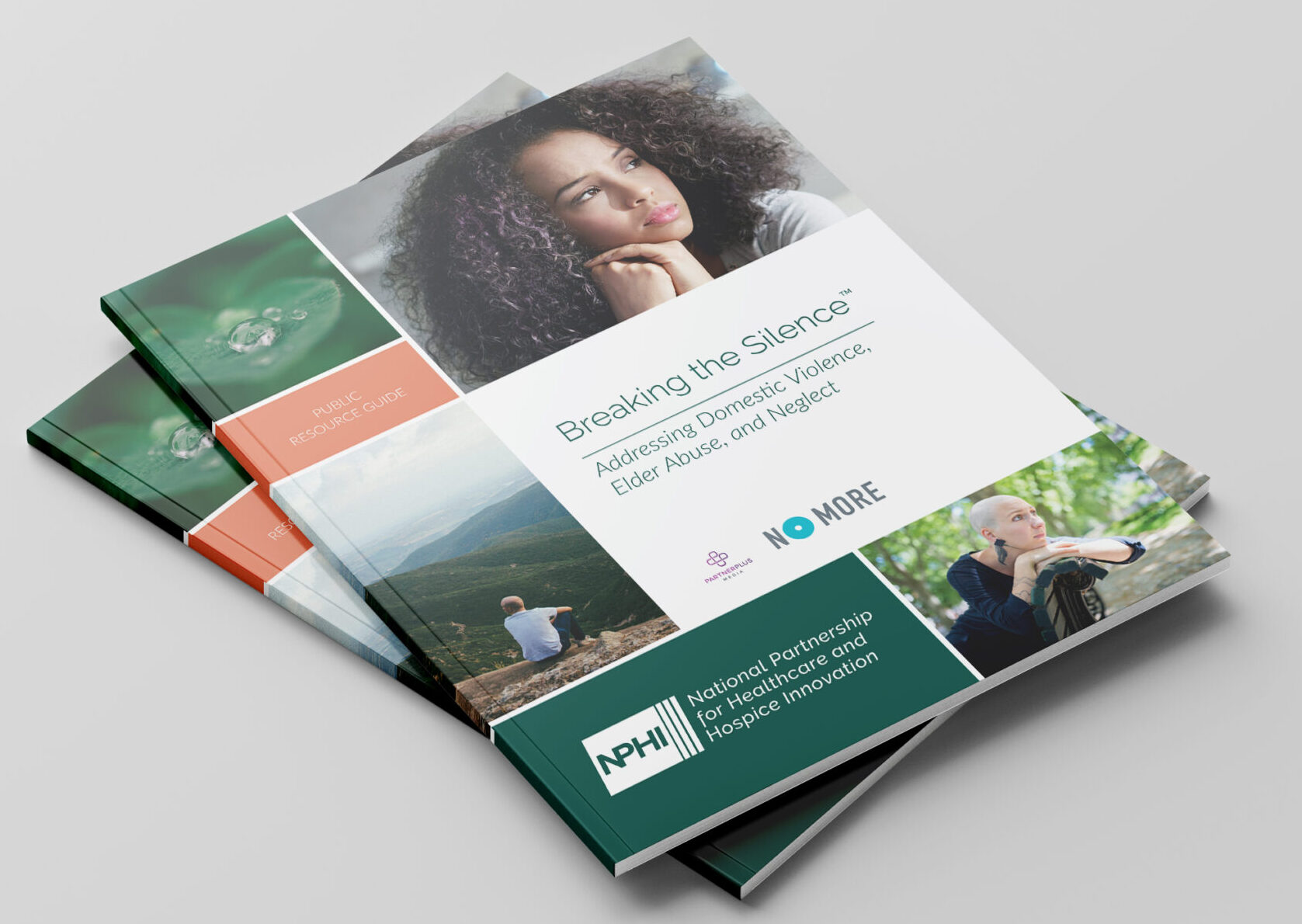Breaking the Silence™
Guide to Understanding and Responding to Domestic Violence, Elder Abuse & Neglect
Breaking the Silence™ is a life-saving resource created by the National Partnership for Healthcare and Hospice Innovation (NPHI), in collaboration with NO MORE, to address the silent and often hidden epidemic of elder abuse, domestic violence, and neglect. Designed for caregivers, clinicians, and families, the guide provides actionable steps to recognize and respond to abuse—especially in vulnerable and end-of-life populations. It’s a tool for safety, awareness, and empowerment.
Understanding the Silent Epidemic
Every year, millions of older adults experience abuse or neglect—often in silence.
Elder abuse can take many forms: physical, emotional, sexual, financial, and neglect. It’s estimated that 1 in 10 adults over the age of 60 has experienced some form of abuse, and with many cases going unreported, the true numbers may be even higher.
Older adults with cognitive impairments such as dementia are especially at risk. Abuse doesn’t always leave visible marks, but its emotional, physical, and psychological toll can be devastating—not only for the individual but also for families and the caregiving team.
Addressing the intersection of domestic violence and elder abuse requires a multifaceted approach… It’s time to take collective action to ensure that every individual can live free from fear and harm.”
Pamela Zaballa - CEO, NO MORE
Free Public Resource Guide
Download your free digital copy today and share with those who need it. It doesn’t matter if you’re a caregiver or a clinical provider, this resource will help you understand, identify, and report cases of abuse.

Need help now?
If you or someone you know is experiencing elder abuse, neglect, or exploitation, help is available.
You will be connected to local adult protective services and elder care resources.
Free, confidential, 24/7 support for domestic violence survivors of all ages.
Understanding the Different Types of Abuse
Physical, emotional, sexual, financial, and neglect—what they look like and how they often present.
Recognizing the Warning Signs
Behavioral and physical indicators that could signal someone is being harmed or exploited.
Resources for Caregivers and Families
Where to turn for support, protection, and intervention.
Understanding risk factors and common characteristics of victims and perpetrators
It's not always what you think, and every case is different, but understanding some basics is important.



